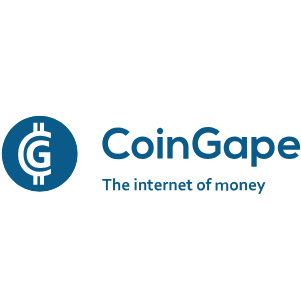Summary Coinbase's business model pivot towards subscription and service revenue is likely to help stabilize EBITDA during market downturns. Institutional adoption of crypto assets, driven by products like USDC and regulatory clarity, is key to Coinbase's growth. Despite risks such as technology vulnerabilities and regulatory challenges, Coinbase's potential growth in the crypto market supports a Strong Buy rating. I first wrote about Coinbase ( COIN ) back in August 2021. The timing was both good and awful. On a short-term basis, it was very good with the company hitting its all-time high at $357.39 later that year, but zooming out to a longer-term horizon it was lackluster. Seeking Alpha Nevertheless, my thesis back in 2021 was that the company could become what amounts to a prime broker for institutional clients, and that this position in a nascent industry would give them a tremendous advantage. I believe that this is not wrong, and they are walking through that path. However, the cyclicality of the crypto markets and its impact on the company’s business muddy the waters for everyone looking at the company. Perhaps this is a good time to revisit this company. Business model pivot Coinbase went through tough times during the last crypto downturn due to its reliance on trading volumes. The company spotted this issue and developed a subscription-based model . The company made keeping positive EBITDA in all market conditions a goal, and it has managed to pull that off for the past six quarters. Although this is important news for the company in terms of having a revenue and cost structure that is capable of enduring downturns, the most important aspect for the company’s prospects is still adoption. Coinbase The introduction of the Bitcoin and Ethereum ETFs and the rise of layer 2 solutions, like Base , are the main drivers for institutional adoption, which is reflexive in the sense that it functions as a seal of approval for other participants. This is also forcing regulatory clarity from regulators that have not been proactive in their approach. Tether’s 5 billion profits from its stablecoin business are a testament to the potential of the whole field. There are other automatic rebalancers in the company’s business. The USD Coin, in which Coinbase participates in partnership with Circle, is a business segment sensitive to lower rates. As an example, a 25 bps decrease in rates requires the company to grow the USDC market cap by $2 billion to maintain revenue neutrality, according to Alesia Haas at Oppenheimer's 27th Annual Technology Conference. However, a lower rate scenario should also lead to a boom in crypto transactions (even if not immediately after a recession). Adoption drivers Actually, USDC is likely to be a key point towards crypto adoption. The company made the BTC/USDC the base trading pair for the international exchange so that it becomes a foundational asset for global traders. For instance, Coinbase is working actively to fulfill the MiCA regulations in Europe so that it can stand out from other stablecoins and help drive demand in Europe. This is a critical step to achieve crypto utility and real-world use cases for crypto. It is important to note that MiCA compliance will allow Coinbase to widen its offerings to the whole EU market, without having to go through a country-by-country approach. Additionally , the company is also looking to have a MiFID license in order to offer new products like futures and options on crypto assets. The company also seems committed to expanding its prime financing business for institutional clients, namely, ETF providers that need to buy spot Bitcoin to settle into the ETF and provide margin for institutions to trade digital assets. The company is also looking forward to building the necessary infrastructure to allow institutions to re-hypothecate their own balances, using them as collateral for loans. Financials The financials provide some hints that the ability to balance the company’s business during slower crypto markets is paying off. Although spot trading volume dropped 28% QoQ, the EBITDA margin held up well. This was in part thanks to subscription and service revenue that grew 17% QoQ, relating mostly to stablecoin revenue and blockchain validator rewards. YCharts Now, looking at Coinbase’s balance sheet is not a straightforward task. One of the most important aspects of the company's balance sheet structure is that, apparently, they hold all their client's assets on hand. This is a very important aspect because if they don’t respect this structure they are vulnerable to a bank run. YCharts Therefore, looking at the company's current ratio, we can see that the company holds current assets in excess of current claims. If we now ignore the clients’ assets and liabilities on both sides of the balance sheet, we will see that the company holds close to $7.2 billion in cash and has close to $4.2 billion in long-term debt. That gives it more than enough room to invest in further growth and develop the necessary infrastructure to develop new service offerings. Coinbase Valuation It is hard to frame Coinbase in a peer comparison. The problem is that the company is the only one crypto exchange trading in public markets. The peers for our comparison will have to be traditional finance brokers, which, I think, do not reflect the potential for growth and for scalability that Coinbase enjoys. Therefore, I will also add two fintechs to the comparison table, in order to provide a wider sample. Seeking Alpha Looking at this sample, the company is actually in line with other peers. The company is trading at 11x sales, which is in line with the other companies, except for Block ( SQ ). The same happens when we look at a price-to-cash-flow metric. The main takeaway from looking at valuation is that the company does not seem undervalued or overvalued compared to peers. Risks The company enjoys very interesting margins, and if it is capable of capitalizing on the growth prospects for the crypto market, Coinbase will likely be a much bigger company in terms of revenues and profits than what it is now. However, the underlying assumption is critical and poses a big risk. There is the possibility of negative developments stopping the adoption of crypto assets. Additionally, the company relies on several untested technologies like Base, the layer 2 Ethereum network that has enabled them to reduce fees in the network. If something goes wrong, the whole company might be at risk. On the other hand, the company has custody assets for its clients, which makes them a target for hackers and people willing to exploit weaknesses in the cybersecurity processes of the company. These are very important tail risks to consider because if, for any reason, the company loses access to the client’s assets, it is hard to see a comeback from this. In any case, a couple of considerations are also worthy. The crypto market has shown tremendous resilience in light of the pronounced swings it went through during the past decade, and it seems poised to grow given the political public commitment we have seen from US presidential candidates. On the other hand, although Coinbase constitutes a single point of failure, the truth is that the company has been able to develop a solid infrastructure that, so far, has been bulletproof. Conclusions The company is not cheap. However, the ability of the company to get itself entrenched in the institutional marketplace by being in the generate service and subscription revenue from Therefore, the company has been able to grow with the industry and the chances are decent that they will keep growing with the industry. So the question becomes how much will the industry grow in the following years? It’s hard to answer that question. We know that forecasts have been underestimating the market size, there were estimations for digital asset revenue of around $5 billion in 2024; however, we now know that Tether alone made $5 billion in profit in the first six months of the year. Forecasts have not been the best guide for the industry. In any case, McKinsey estimates that the base scenario for the market capitalization of tokenized assets is around $1.9 trillion. McKinsey & Company If this materializes, the case for Coinbase as a prime broker for this ecosystem becomes very strong. As we have seen, the company has been developing the tech stack to serve institutional clients, and they have been improving their business model around this proposition. If the market develops according to this forecast, we can develop two scenarios for Coinbase, one bull and one bear. The bull scenario is built on a higher growth rate, and it also includes a higher sales multiple valuation. The starting point in both cases is the revenue estimate for 2024, around $5.75 billion, and the share dilution is 9% per year. Author's computations The results show a risk/reward asymmetry favoring the bull case. Given how far the company has gone and the potential for it to go even further, I am keeping my rating of Strong Buy, originally posted in 2021.















